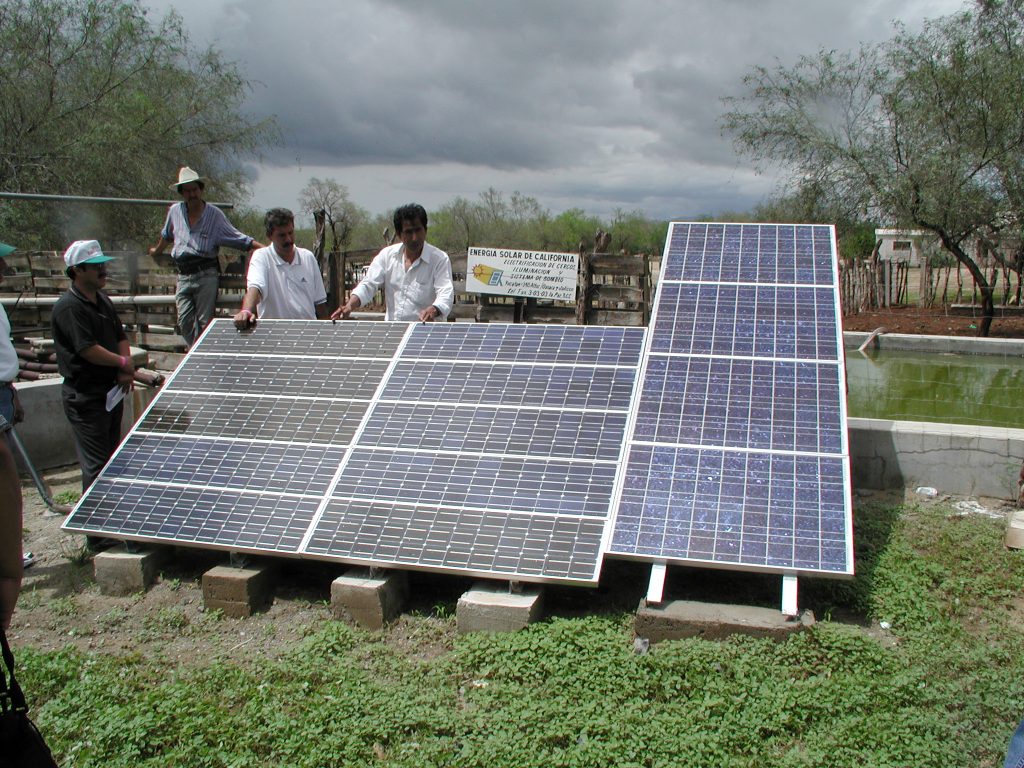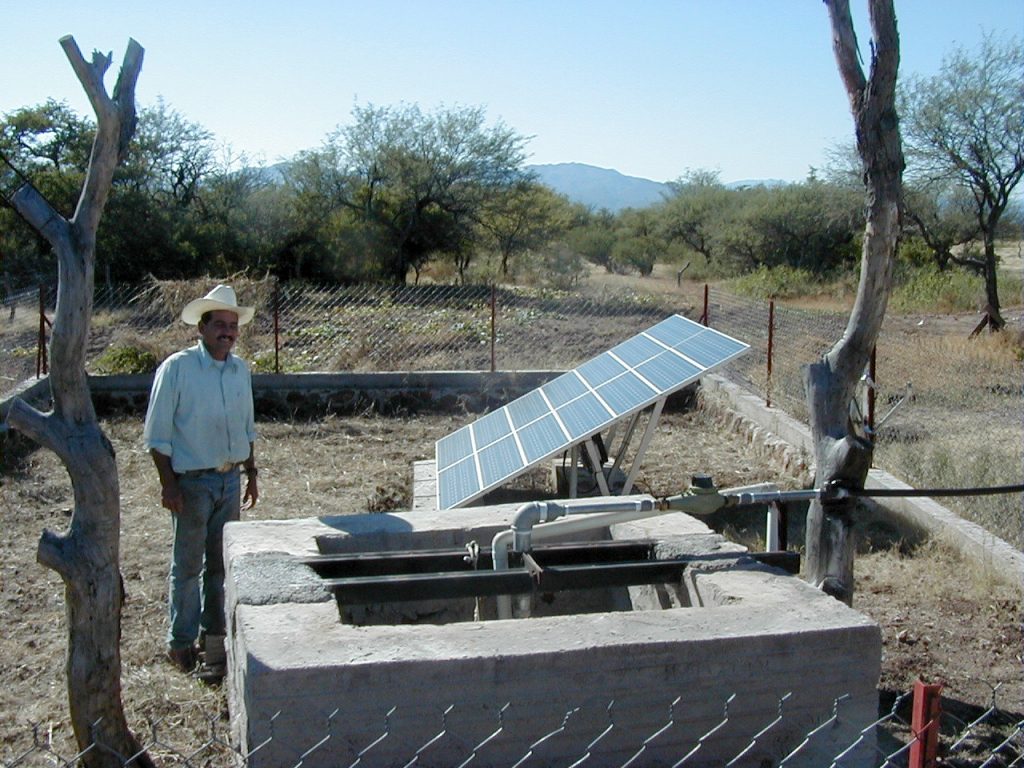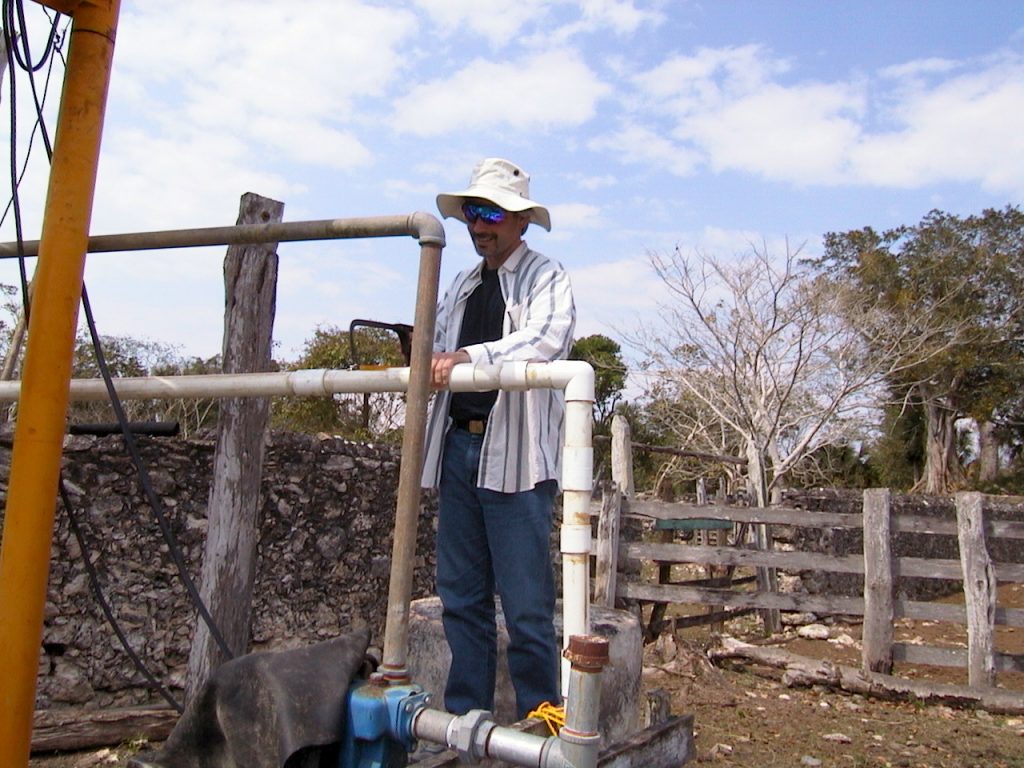
Download 300dpi JPEG image, ‘Mexico03.jpg’, 2.5MB (Media are welcome to download/publish this image with related news stories.)
ALBUQUERQUE, N.M. — “Una tecnología muy moderna para una actividad muy antigua” — “a very modern technology for such a very old activity” — says José Canul of the solar-powered water-pumping station at his ranch in rural Quintana Roo, Mexico.
Not long ago, before the photovoltaic (PV) system was installed, horses, oxen, and people carried water from the ranch well to Canul’s cattle and garden. Today the bountiful southeast Mexican sun powers a submersible pump that draws enough water to sustain about 40 head of cattle. It is the first electricity to flow on Canul’s ranch.
Installation of Canul’s PV system in 1997 was made possible by the Mexico Renewable Energy Program, established by the U.S. Department of Energy’s Sandia National Laboratories in 1994. The program has resulted in the installation of more than 250 PV and wind-energy water-pumping systems, as well as 150 other renewable energy projects, in 14 Mexican states.
Now Sandia is helping expand efforts to bring the benefits of solar and wind power to more of rural Mexico through new joint programs with the Mexican government, renewable energy suppliers in the U.S. and Mexico, universities, and other partners.

Download 300dpi JPEG image, ‘Mexico02.jpg’, 956K (Media are welcome to download/publish this image with related news stories.)
One such effort, the “Renewable Energy for Agriculture” program managed by FIRCO (an agricultural extension service under the Mexican Ministry of Agriculture), is expected to bring as many as 1,200 new PV systems and 55 wind systems to isolated areas of Mexico during the next five years.
The systems will be used primarily for water pumping, but some may be adapted for other uses that improve the economic, social, and health standards in agricultural areas of Mexico.
Benefits north and south of the border
“These programs seek to improve the economies of some of the poorest areas of rural Mexico by increasing the profitability of small ranches while also promoting the use of renewable energy technology, reducing pollution from fuel-powered generators, and broadening the renewable energy market outside the U.S.,” says Sandia program manager Michael Ross. “It benefits everyone involved.”
As part of the expanded programs, Sandia’s renewable energy technology experts are helping write specifications for standardized renewable energy systems; helping install many of the systems; training local officials, users, and vendors to install, operate, and maintain the systems; and designing new applications for renewable energy systems.
Sandia consultants also lead “train-the-trainers” sessions during which Mexican program partners and vendors learn how to teach others to install and maintain the systems.
FIRCO plans awareness and training workshops in all 32 Mexican states.

Download 300dpi JPEG image, ‘Mexico01.jpg’, 166K (Media are welcome to download/publish this image with related news stories.)
“The ultimate goal is to make the use of renewable energy systems in Mexico widespread and self-sustaining,” says Ross. “When Sandia is finished, there will be people scattered throughout Mexico who will have the capabilities to do this.”
Energy and national security
The Renewable Energy for Agriculture program is funded by $31 million in loans and grants to FIRCO from the World Bank, the Global Environmental Facility, the Mexican government, and the end users. It is part of Mexico’s Alianza para el Campo program for improving agricultural productivity.
Support for Sandia’s involvement comes from the Department of Energy and the U.S. Agency for International Development.
Sandia and FIRCO officials signed a five-year collaborative agreement in Mexico City on Aug. 24 specifying how the two organizations are to work together as part of the program.
“Energy availability is an element of national security,” says Margie Tatro, Director of Sandia’s Energy and Transportation Security Center. “If people throughout the world have access to reliable, nonpolluting, affordable forms of energy, they are more likely to have prosperous existences.”
“When I’m in Mexico I see the effect this technology is having on the lives of people who probably haven’t had electricity in their lifetimes,” adds Ross. “That’s the type of reward I cannot get by just sitting in my office.”